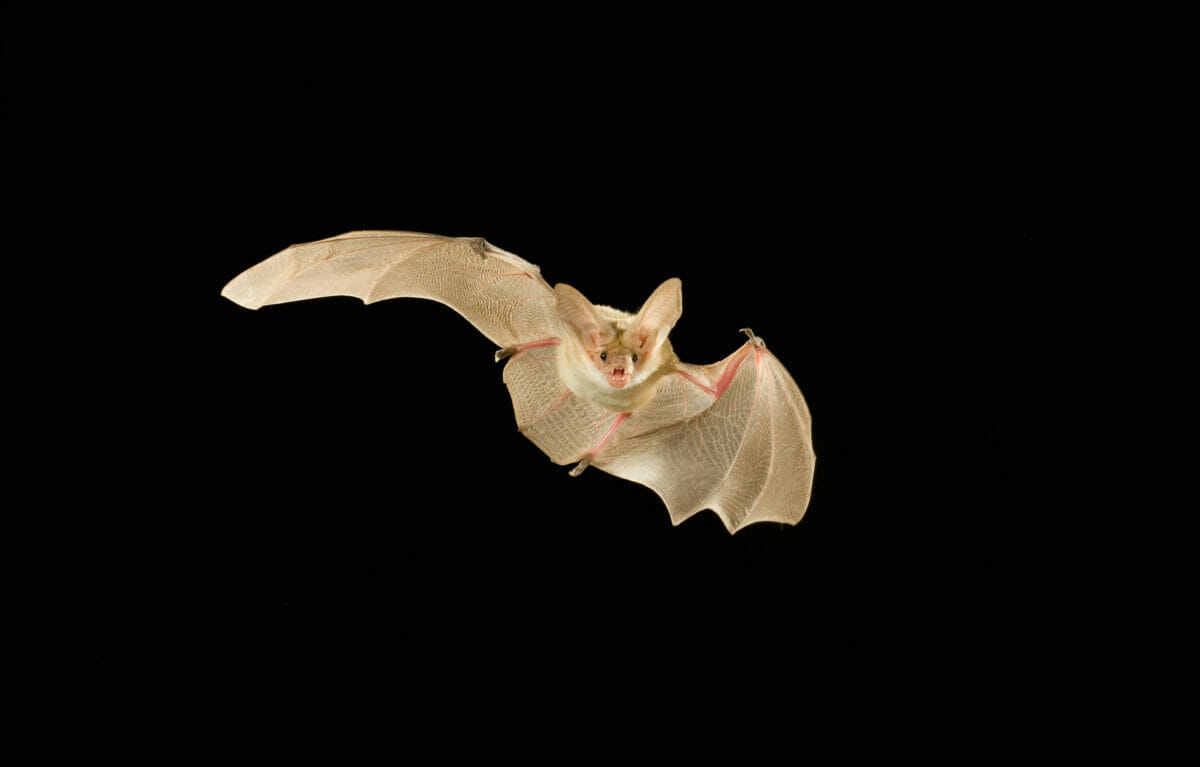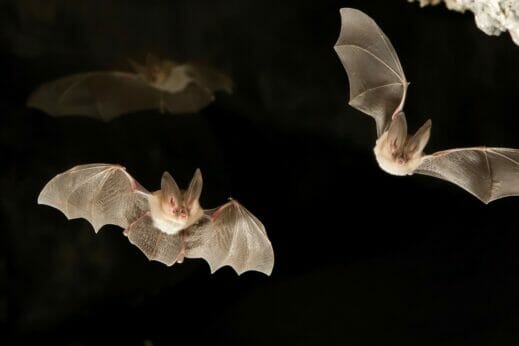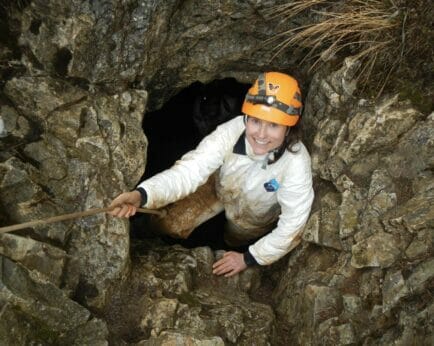A new report from the North American Bat Conservation Alliance shows that half of all bats are at risk of dying out in the next 15 years, mainly due to climate change.

When the North American Bat Conservation Alliance (NABCA) released its first ever State of Bats report this spring, it was intended as a baseline record of how bat species in North America were faring. NABCA is a trilateral network, with biologists and resource managers across Canada, the US and Mexico. With hundreds of bat species traveling throughout the continent, scientists wanted to assess how things were going.
The results were stark.
The data show that 52 percent of all bat species are at severe risk of population decline in just 15 years and more than 82 percent of all species will be impacted by climate change. The researchers assessed the population status of roughly 200 bat species across North America, looked at trends and predicted what might happen over the next decade and a half. Then, they ranked the bats in terms of which species are most at risk.
“It is alarming,” says Dr. Winifred Frick, the chief scientist with Bat Conservation International. “One of the things that is sort of shocking from the report and that we need to be paying close attention to is just how the cumulative, chronic stressors of habitat loss and climate change add up to this overall grim picture.”

Townsend’s Big-eared Bat pair exit a cave in central Oregon. Photography by Michael Durham/Minden Pictures, Bat Conservation International.
Warming climates have reduced bat species across North America. Extreme temperatures, such as heatwaves and winter storms, continue to threaten bats, while drought is a huge concern. Without access to enough water, bats will fail to reproduce and could die themselves, putting multiple generations at risk.
There’s also expansion and development, which encroach on bat areas. But major expansion of logging in Canada, fire in the United States and livestock ranching in Mexico have drastically reduced safe areas for bats. As a result, 98 percent of bat species are losing habitat.
There are also biological and viral factors, such as white nose syndrome, which has caused a more than 90 percent decline in three different species of bat in just the last decade. And there are environmental factors, such as wind turbines and wind energy facilities, that kill a significant number of bats each year.
“We’re estimating that over half a million bats in the US alone are killed by wind turbines [each year],” says Frick. While Frick and NABCA want to see that number reduced, they also support greener energy alternatives. But Frick says the choice doesn’t have to be either/or. Engineers can change the wind speeds at which the turbine blades spin because “we know most of the bat fatalities happen on low wind speed nights,” she says. There is also research going into where to put wind turbines for lower ecological disruption and ways to reduce bat attraction to the turbines, perhaps through sound wave disruption. While that research is still new, Frick says it’s important to support renewable energy infrastructures without risking species biodiversity.
As Frick notes, bats are incredibly important contributors to ecological stability. They make up 20 percent of all mammalian biodiversity on the planet and work as pollinators and seed dispersers, especially through tropical rainforests. “Bats are voracious predators, and it’s been estimated that they save the agricultural industry in the United States alone billions of dollars annually by eating crop pests,” says Frick. Plus, she says, bats are just cool. They bring in tourism dollars in parts of Mexico and US, such as the Congress Avenue Bridge, in Austin TX. They’ve been a source of media fascination for decades. “I always like to point out that we wouldn’t have Batman as a superhero without bats,” she says. “They make our art and our literature and our technology richer and more interesting. There’s some incredible adaptations with sonar and echo-location because of bats.”

Shannon Hilty surveying caves in Montana. Photography by Dave Bobbitt.
While the report shows some scary numbers, Frick says the good news is that it represents a starting place for researchers. Much of this information didn’t exist before, so having a sense of where bat species are is the first step. From here, researchers are looking to check in and survey the species in intervals of five years. Some of the information may end up being updated yearly, through initiatives such as the North American Bat Monitoring Program. But the most in-depth research takes time.
In the meantime, although it may feel like an overwhelming problem at times, there are actions that individuals can take. Frick says that letting old trees stand on your property can help provide homes for bats. Planting native plants and reducing pesticide use helps provide food for bats in the form of moths and beetles. And if you’re in an arid area, providing water sources for bats can be a big help.
There is one main positive takeaway from the State of Bats report: the trilateral co-operation and work between scientists in three different countries. As Frick says, we need to think about conservation not just at an individual or community level, and “not just within our geopolitical boundaries, but also with our neighbors and at continental scales.”
”The UN was told in 2007 that chemtrails trap warmth and create global warming – helping to convince the nutters that climate change is real.”
I raise tilapia on my farm and have plenty of brown bats! Many of the bats at my former location have migrated and followed me to my new location. Mosquitoes provide chitin for my tilapia and abundant feed for the bats! I clap and whistle and they swoop down close then jet away! Made a Bat House last year out of rotting pallet wood. Every animal plays a role. This is Life